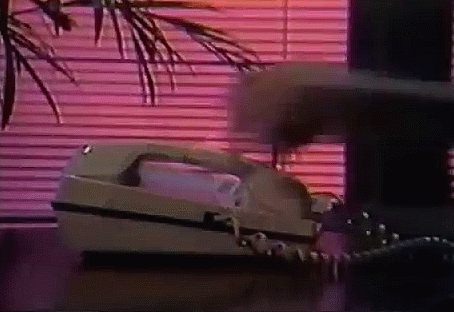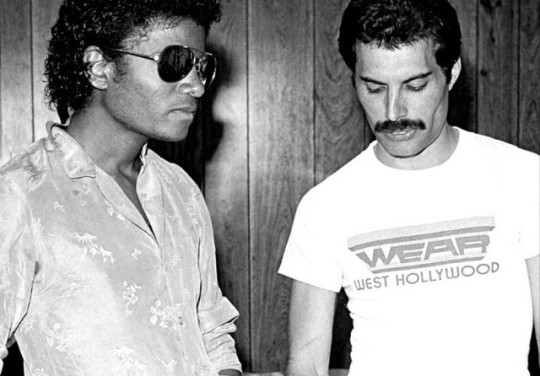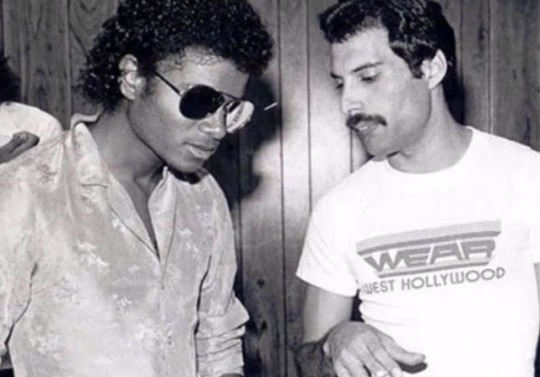Audio
How Will I Know by Whitney Houston except on the speakers of a CVS as you slowly peruse and lowkey dissociate in the hair products aisle. You’ve been staring at the red dye section for god knows how long, now.
requested by @heythereghosts
393 notes
·
View notes
Text
Here’s Why You Should Be Reading 1980′s Novels Right Now
Even to put aside creations of genius like leg warmers and high waisted jeans, we still have a lot to learn from the decade of big hair, big TV, and even bigger greed. Here are three books from the 1980’s, and why they’re still absolutely worth your time.
First up is The Handmaid’s Tale. Margaret Atwood’s highly praised speculative novel The Handmaid’s Tale is an account of the life of a woman in a society that considers her less than woman. She’s more important for her parts. That society, the Republic of Gilead, is a dystopian, totalitarian theocracy that replaced the government of the United States in the name of “a return to traditional values” (Atwood 7). Due to low birth rates caused by viruses and pollution, a new order was implemented in which society is modeled after extreme religious conservatism, and fertile women are forced to be positioned as “Handmaids” for the sole purpose of serving as child bearers for the Commanders and their Wives.
Limitations on reproductive freedoms are not something contemporary women will be wholly unfamiliar with. Since the 1970’s, women in the United States have had their legal right to determine their own terms for pregnancy or termination, though there are still many challenges that affect vulnerable women particularly in rural areas. But recently, following the blocking of the Supreme Court nomination from the sitting but outgoing president and the election of a casually authoritarian conservative president in 2016, these protections have come under question.
Donald Trump has had the opportunity to nominate and appoint two conservative judges to the Supreme Court, and states have already begun implementing “trigger laws;” that is, legislation that upon the overturning of Roe v. Wade would criminalize abortion. I can’t help but think of then eighteen year old Evelyn Beatriz Hernandez Cruz of El Salvador. In 2016, Cruz unknowingly was pregnant following repeatedly being raped by a gang member, and experienced a stillbirth in her home. In 2017, she was sentenced to thirty years in prison ("El Salvador Rape Victim Jailed…:”).
Such severe real-world examples aren’t necessary to see the reflections of the kind of extreme conservatism that The Handmaid’s Tale brings up. Offred, the narrator of the novel that is able to give us the perspective of the Handmaids of Gilead, at one point says that “a rat in a maze is free to go anywhere, as long as it stays inside the maze” (Atwood 165). Mazes aren’t all visible to us, but they’re confining nonetheless. Earlier in the narrative, Offred describes “then,” before Gilead:
I never ran at night; and in the daytime, only beside well frequented roads. Women were not protected then. I remember the rules, rules that were never spelled out but that every woman knew: Don’t open your door to a stranger, even if he says he is the police. Make him slide his ID under the door. Don’t stop on the road to help a motorist pretending to be in trouble. Keep the locks on and keep going. If anyone whistles, don’t turn to look. Don’t go into a laundromat, by yourself, at night… Now we walk along the same street, in red pairs, and no man shouts obscenities at us, speaks to us, touches us. No one whistles. There is more than one kind of freedom, said Aunt Lydia. Freedom to and freedom from. In the days of anarchy, it was freedom to. Now you are being given freedom from (24).
These rules that no one talks about, but all women know are invisible mazes, and this isn’t fiction. Women are forced to mentally and physically wind their ways around the dangers and obstacles of the patriarchy. Atwood published The Handmaid’s Tale in 1986, and the struggles she comments on through Offred are just as prevalent now in 2019 as they were then, if not more. Irene Cambra Badii writes that the story of The Handmaid’s Tale, told in both the original novel and the new television series, shows a “distinctive characteristic of the patriarchal system with respect to conception of women: the social mandate of motherhood. Patriarchy considers reproduction as a basic social function, in which women play an indispensable role” (182). Many contemporary readers will not enjoy this book, but for all the right reasons, I believe. It’s crooked, eerie, and absolutely uncomfortable oftentimes. I don’t think The Handmaid’s Tale is a book that is meant to be enjoyed, but I believe that’s the reason that it’s as important now as it ever has been.
Secondly is The House on Mango Street. The House on Mango Street, Sandra Cisneros’s 1980’s poetic and understated novel, consists of short vignettes which detail moments in the childhood of Esperanza, a young girl navigating her life in a seemingly forgotten, run-down neighborhood. Esperanza and her sister Nenny come of age in this neighborhood, and they see some of the difficulties that people, especially women, face.
The book is dedicated “a las mujeres,” or, to the women, a common subject in the novel. The narrator is particularly interested in the stories of women, children, and the home environment itself. Stories like “Darius & the Clouds” is exemplary of the novel as a whole. In style, like the other chapters, it’s short, has childlike diction, and is packed by Cisneros with details about Darius, one of the neighborhood boys, doing things like chasing girls with sticks that have touched critters, as neighborhood boys do. The story opens:
You can never have too much sky. You can fall asleep and wake up drunk on sky, and sky can keep you safe when you are sad… You all see that cloud, that fat one there? That’s God, Darius said. God? somebody little asked. God, he said, and made it simple (33).
This informality continues throughout the novel, and gives each and every character a lifelike quality that makes the reader even more invested in these kids and families than he or she might be otherwise. Though we get short descriptions of the situation that Esperanza and her family are in, and Mango Street as a whole, details about the kids and their dynamic are what really distinguish the setting and characters of the novel. Darius’s story in particular echoes what seems to be much of the theme of the novel as well. Cisneros writes that there is too much sadness on Mango Street, but the kids “take what [they] can get and make the best of it” (33). What the kids make the best of in this story is the sky, though we see this repeated in many ways, from sky to hand-me-down high heels to coconut and papaya juice.
Many of the stories deal with environment, and the subject of nature is a recurring one in this book. Cisneros seems to have a deep appreciation for nature; she speaks extensively (through Esperanza and in the author’s truly beautiful introduction to the novel) about the type of garden she would like to have, and the type of house, and furnishings, and life as it relates to these things. Esperanza’s words and experiences are marked by the power of one’s environment. We can see this as Cisneros’s appreciation of beauty as well as a sort of political statement echoing the “All brown all around, we are safe” sentiment in “Those Who Don’t,” or possibly exposing some of the privileges that Esperanza notices in people outside of her street, where women may not be forced to “sit their sadness on an elbow” (29, 11). Cisnero writes:
Those who don’t know any better come into our neighborhood scared. They think we’re dangerous. They think we will attack them with shiny knives. They are stupid people who are lost and got here by mistake. But we aren’t afraid. We know the guy with the crooked eye is Davey the Baby’s brother, and the tall one next to him in the straw brim, that’s Rosa’s Eddie V., and the big one that looks like a dumb grown man, he’s Fat Boy, though he's not fat anymore nor a boy (29).
The novel beautifully and skillfully demonstrates an understanding of a life indistinguishable from the politics of feminism, art, poverty, and the Latinx family that Cisneros articulates in her introduction, and truly isn’t a book to miss. In “Coming of Age in a Divided City: Cultural Hybridity and Ethnic Injustice in Sandra Cisneros and Veronica Roth” Susanna Roszak connects Mango Street to many of the currently most popular young adult novels, like Veronica Roth’s Divergent and Lauren Oliver’s Delirium; she suggests examining these texts “reveals ways in which they echo current issues of race and ethnicity without naming them as such” (61). Not only has this book stayed relevant since the 1980’s, but it will be enjoyed by today’s young adult readers in much the same way as the chart-topping books they’re used to consuming as well. This is one of those pieces of literature that is so lovingly curated with the markers of a street in a neighborhood that the author seems to truly know that it can seem absolutely timeless, in 2019 or otherwise, and whether you can relate to the characters or not, it’s an unexpectedly beautiful and most valuable place to exist for the couple of hours readers can lose themselves on Mango Street.
The third 1980’s novel we should all be paying attention to is The Color Purple. The Color Purple is set in early twentieth century rural Georgia and is told in a series of letters to God from our narrator, Celie. Celie grew up being raped and abused by her father, and then was transferred to the home of “Mr.,” where she endured similar abuses. The one good thing she found when moving to be a part of and take care of Mr.’s family was his photo of his past lover, Shug Avery.
Shug and Celie become best friends, and, eventually, lovers as well. Shug, an experienced blues singer, takes Celie under her wing and helps her realize her own strength and independence, and even reconnects her with her sister, Nettie. Shug tells Celie that her “first step away from the old white man was trees. Then air. Then birds. Then other people” (Walker 73). In her exploration of green-feminist politics, “Ecowomanism: Black Women, Religion, and the Environment,” Melanie Harris points out the return to spirituality found in the environment, and the type of environmentalism that comes out of that. In a modern, technological society, there is little room for inner-lives, and many turn to literature, religion, and some even to a focus on nature. If we began to need this in the 80’s, we certainly only need it more now. Harris is interested in the connection between modern social justice and environmental justice. She believes that we can use the example of Celie and Shug as a “literary example as a source from which to glean ethical values that can help shape earth honoring ethics, earth honoring faiths and eco-theologies” (27).
Not only is The Color Purple an inspiring novel with timeless struggles and a poignant view at the type of intersectional struggles black women have faced, it also is a subtle reminder of the type of love for nature that Walker, in her books and in her definition of “womanism” advocates for. In 2019, while many of those governing the country continue to deny climate-science, but scientists’ estimates become more and more bleak, a little reminder of the preciousness of life and the precarity of nature as we know it will never hurt. Some believe that due to “the connections made between women and nature... women are disproportionately affected by environmental abuses throughout the globe, women have, an ‘epistemological privilege’ or deeper knowledge about earth systems than men” (Harris 32). These theories are fascinating, and only growing as these concerns become more immediate. Reading Walker’s theories on nature, womanism, and The Color Purple may shed light on some of what the importance of this new focus may be.
Works Cited
Atwood, Margaret. The Handmaid's Tale. 1st ed., Anchor Books, 1998.
Badii, Irene, et al. “The Mandate of Birth. Bioethical and Biopolitical Issues Regarding the TV Series The Handmaid’s Tale.” Revista de Medicina y Cine / Journal of Medicine and Movies, no. 3, 2018, p. 181. EBSCOhost, doi:10.14201/rmc.19091.
Cisneros, Sandra. The House on Mango Street. Vintage Contemporaries, 2009.
El Salvador Rape Victim Jailed 30 Years For Stillbirth". Aljazeera.Com, 2017, https://www.aljazeera.com/news/2017/07/el-salvador-rape-victim-jailed-30-years-stillbirth-170707062208443.html.
Harris, Melanie L. “Ecowomanism: Black Women, Religion, and the Environment.” Black Scholar, vol. 46, no. 3, Fall 2016, pp. 27–39. EBSCOhost, doi:10.1080/00064246.2016.1188354.
Roszak, Suzanne. "Coming of Age in a Divided City: Cultural Hybridity and Ethnic Injustice in Sandra Cisneros and Veronica Roth." Children's Literature, vol. 44, 2016, pp. 61-77. Project MUSE, doi:10.1353/chl.2016.0022
Walker, Alice. The Color Purple. London: Women's Press, 1992. Print.
0 notes
Photo
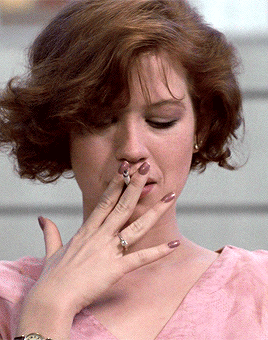


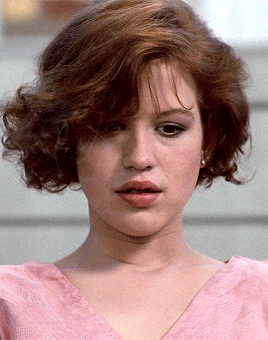
The Breakfast Club (1985) dir. John Hughes
8K notes
·
View notes
